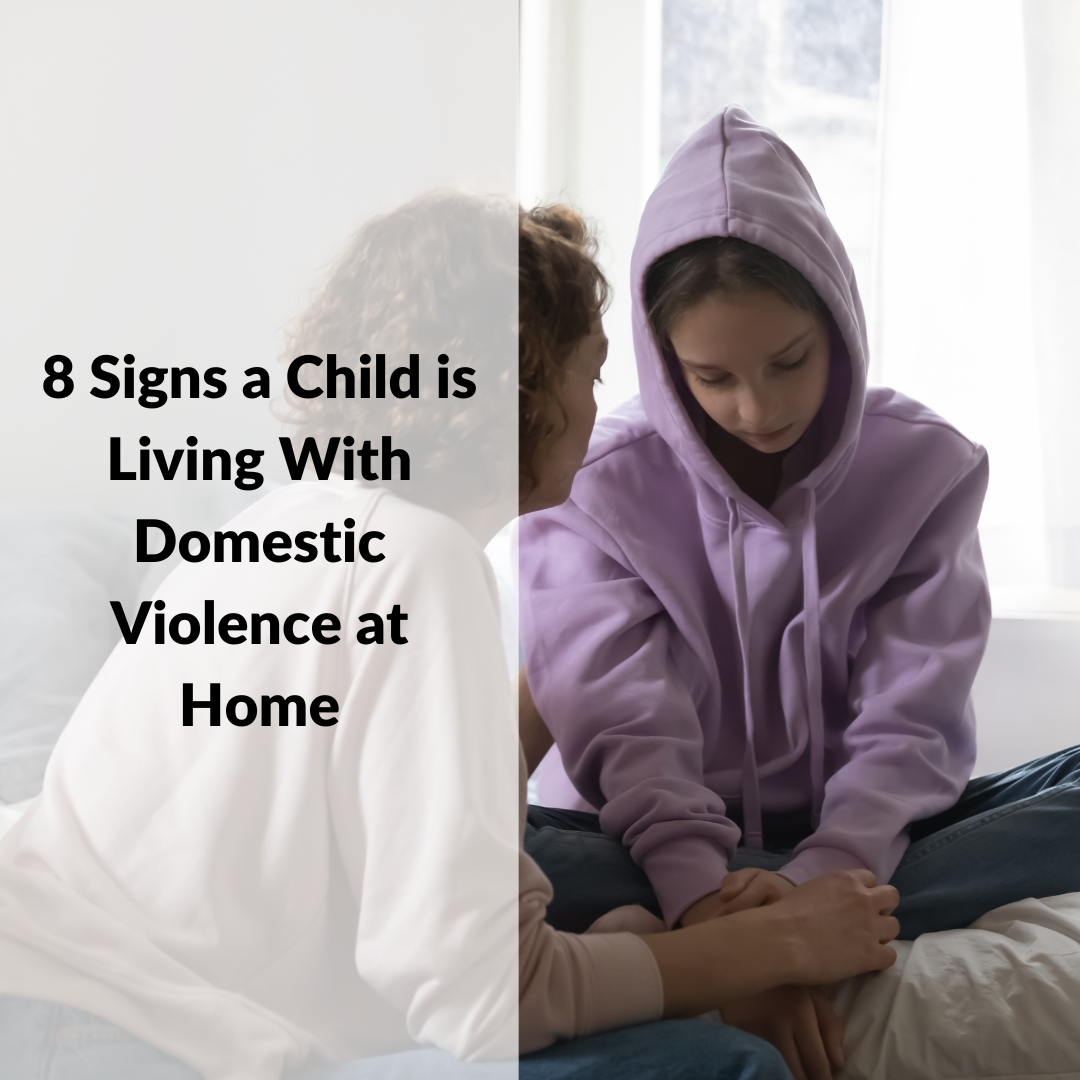Did you know about one in seven children grow up living with domestic violence in their homes?
Fortunately, research suggests that if these children have a caring adult in their lives, they are much more likely to be resilient against the negative effects of Childhood Domestic Violence (CDV).
You can offer vital support to these children. Recognize the signs that they are living in a home with domestic violence. Let’s take a look at 8 signs that a child is living with CDV:
1. The child often appears depressed or sad and displays withdrawn behavior.
Researchers find that children living with Childhood Domestic Violence (CDV) frequently experience depression and sadness. They also struggle to appear engaged in conversation and other normal activities.
2. At school, the child engages in bullying, has trouble making friends, and is frequently absent from classes.
As a result of their traumatic experiences with CDV, children living with domestic violence are more likely to bully other children and generally have trouble making friends. Many researchers believe this behavior stems from a lack of positive examples of healthy relationships at home.
3. The child struggles to adapt to new environments and situations.
Researchers explain that children living with CDV are at higher risk for maladaptation. This means they are less able than other children to adapt when new circumstances arise or when they enter a new environment. For example, if the child were to change schools, move to a new neighborhood, or enter a new social situation, they may have trouble adjusting.
4. The child is prone to anxiety, worry, and fear.
When children live in an unsafe or unpredictable environment, such as a home where CDV is present, the emotions of anxiety, worry, and fear can dominate their personalities. Experts find that about 60% of these children blame themselves, carrying undue guilt and shame.
Research finds that these children may even turn to anger or aggression as strategies for feeling safer in their environment. Additionally, they may whine, stutter, cry, and cling to their parents in public.
5. The child frequently engages in disobedient or negative behaviors, such as fighting, lying, and cheating.
The American Academy of Family Physicians has also found that children living with CDV “are more disobedient at home and at school, and are more likely to have social competence problems, such as poor school performance and difficulty in relationships with others.”
6. The child is prone to experiencing headaches and abdominal pains.
Children living with CDV don’t just experience emotional pain; they can also internalize the traumatic experiences and experience physical symptoms like headaches and stomachaches. They’re even more likely to have allergies, asthma, and the flu.
7. The child displays regressive behaviors, such as thumb sucking.
Children living with CDV may regress in their physical and psychological development as a result of experiencing this trauma.
8. The child engages in risky behaviors.
For example, researchers find that children living with CDV are more likely to have a high school truancy rate, engage in early sexual activity, and even struggle with substance abuse. The Department of Justice reports that these children are also more likely to engage in criminal and violent behaviors.
What can you do if you suspect a child is living with Childhood Domestic Violence (CDV)?
If you think a child you know is living with Childhood Domestic Violence (CDV), we recommend taking our online Change A Life program. Research shows that having a caring adult in one’s life makes a child more resilient against the negative effects of traumatic experiences.
Our 40-minute Change A Life program teaches you how to support a child living with CDV.

